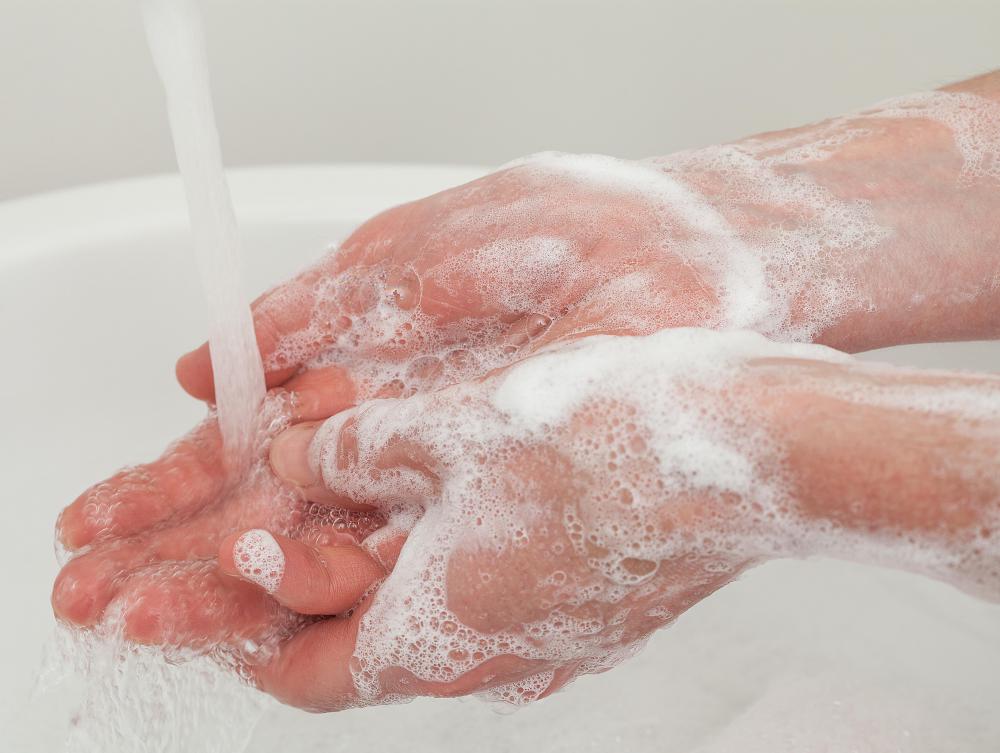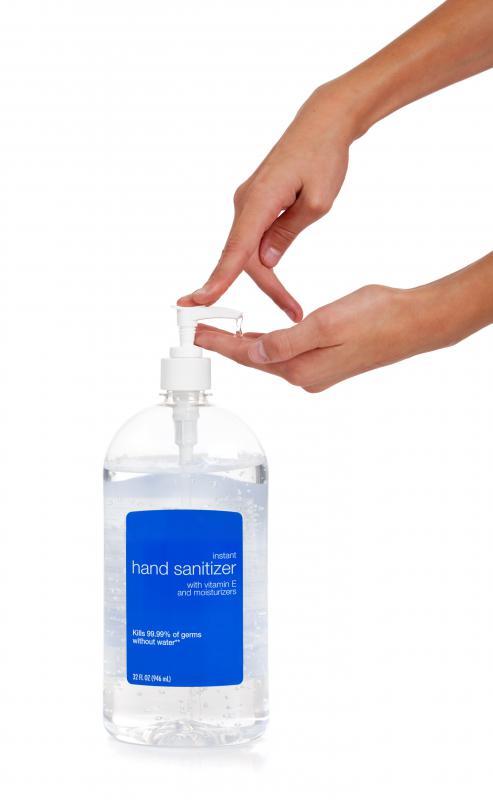At BeautyAnswered, we're committed to delivering accurate, trustworthy information. Our expert-authored content is rigorously fact-checked and sourced from credible authorities. Discover how we uphold the highest standards in providing you with reliable knowledge.
What Are the Most Common Hand Sanitizer Ingredients?
A number of different active and inactive ingredients can be found in hand sanitizing products. Active hand sanitizer ingredients are typically intended to kill germs, which is how these products are able to supplement, or replace the need for, hand washing. Inactive ingredients usually serve to alter the consistency of the products, and hand sanitizers often have the properties of gels, foams, or even double as moisturizing lotions. The most common active hand sanitizer ingredients are various types of alcohol, such as ethanol, n-propanol, and isopropanol, though some products kill germs through other means. Inactive hand sanitizer ingredients often include essential oils, thickening agents, and humectants that can have a moisturizing effect.
Hand sanitizers are products that can help eliminate certain pathogens, either in addition to traditional washing, or instead of it. Many people carry these products around to sanitize their hands in public situations, and the Center for Disease Control (CDC) in the United States even recommends the use of hand sanitizers in hospitals. Some businesses, such as grocery stores and nursing homes, also provide free hand sanitizer dispensers for their patrons and visitors. There are a variety of different hand sanitizers available, but many of them contain some of the same basic ingredients.

The most important category of hand sanitizer ingredients are referred to as active. These are the ingredients that actually kill various pathogens. Most hand sanitizers use some type of alcohol substance as the active ingredient, since alcohol can kill bacteria and fungi in addition to some viruses. Both primary and secondary alcohols can be used as active ingredients. Some examples include primary alcohols such as ethanol and n-propanol, and the secondary alcohol isopropanol.

There are also a few different active hand sanitizer ingredients that are not various forms of alcohol. One example is povidone-iodine (PVP-I), which is a common disinfectant. Triclosan, benzalkonium chloride, and other non-alcohol substances, are sometimes also used as the active ingredients in certain types of no-rinse hand sanitizers. Some of these substances, such as PVP-I and benzalkonium chloride, are also soluble in alcohol.
Many different inactive ingredients are also typically included in hand sanitizers. Gel products usually include polyacrylic acid, and other thickening agents, while moisturizing sanitizers usually have some type of humectant. One example is glycerin, which is a common inactive ingredient in alcohol-based hand sanitizing lotions. Other inactive sanitizer ingredients include substances such as essential oils, dyes, and artificial fragrances, which can add desirable scents and colors to these products.
AS FEATURED ON:
AS FEATURED ON:












Discuss this Article
Post your comments